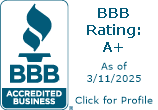
PID Controllers: What Do They Do and How Can They Improve Your Operations?
August 14, 2024
PID (Proportional-Integral-Derivative) controllers are a critical component in industrial automation. They are essential for maintaining precise control over various complex processes. PID controllers work by continuously calculating an error value as the difference between a desired setpoint and a measured process variable. This error is then corrected using three distinct actions–proportional, integral, and derivative–each contributing to the control action in a unique way.
Understanding the basic principles of PID controllers can empower operators and techs to ensure smoother operations in their environment. A common PID controller that everyone is familiar with in their daily lives would be their vehicle’s cruise control system. When activated, the system adjusts engine operating parameters to maintain the desired user-selected target speed.
How PID Controls Work
A PID controller continually adjusts the output to bring the process variable closer to the programmed desired setpoint. The proportional component reacts to the current error, the integral component addresses the accumulation of recorded past errors, and the derivative component predicts future errors based on the current rate of change. All of these elements work together to minimize errors, producing a system that responds quickly and efficiently to disturbances and changes in target-programmed setpoints.

Let’s take a closer look at each component action involved in the processing of a PID controller:
- Proportional (P): The proportional component applies a correction proportional to the current error, meaning the larger the error, the larger the correction or compensation. It acts as the first reaction, but it may not be enough to handle the elimination of steady-state errors.
- Integral (I): The integral component of a PID control sums the errors over time and works to correct any persistent steady-state errors that the proportional component can’t regulate. It’s very effective in systems where the proportional action isn’t enough to reach and maintain the desired setpoint.
- Derivative (D): The derivative component of a PID controller works to predict future errors by analyzing the rate of change of recorded errors. Its function is to help smooth the responsiveness of the system, reducing extreme compensation and ensuring the stability of the system. For example, applications that require a process such as temperature control could benefit from the derivative functions of a PID controller.
How Can PID Controls Improve Your Operations?
Implementing PID controls into operations can provide several benefits to your organization’s goals:
- Improved Operational Consistency: PID systems by design help maintain stability, preventing variations and oscillations in processes that could lead to inconsistent production results.
- Increased Efficiency: By proactively monitoring and managing outputs to maintain the desired setpoint, PID controls ensure that operations run at their optimum conditions, maximizing your production efficiency.
- Enhanced Safety Features: Successful PID implementation ensures safe operating conditions, reducing hazards and keeping your employees safe.
- Adaptability: PID controllers are highly programmable and adaptable. They can be fine-tuned to suit a wide range of applications across industries.
Integrating PID controls into your operations can provide significant improvements to your industrial operations when they are the right application. By design they work to bring improved stability to processes, thus producing greater efficiency and generating a safer working environment. PID Controls are tunable, allowing the experienced service technicians at Embry Automation & Controls to fine-tune the controller to changes in system processes or variables and ensure optimum operating conditions. If you would like to learn more about how we can help implement or optimize PID controllers in your operations, contact us today.




